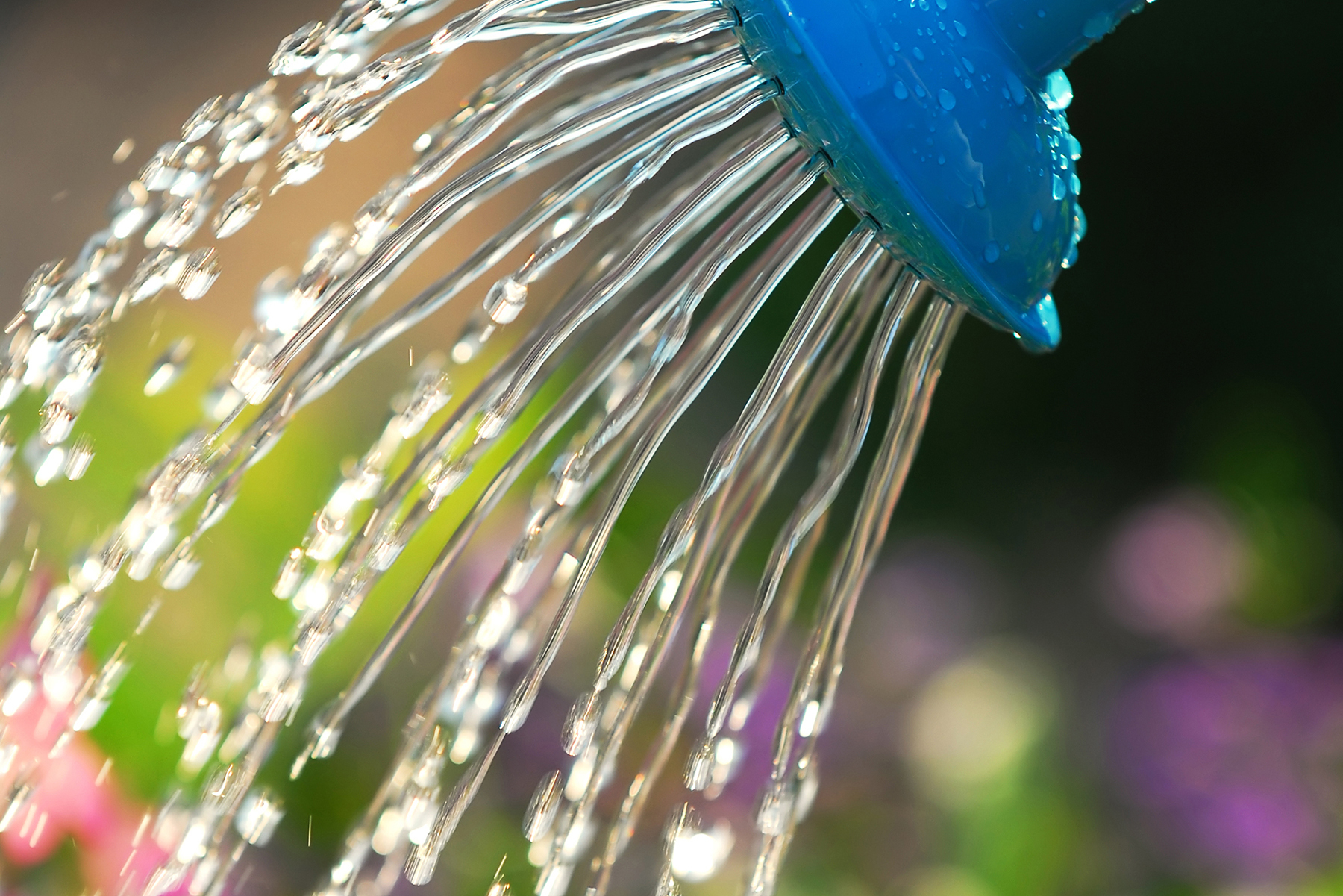Garden Watering
It's A Matter Of Life Or Death!

Improper watering is the leading cause of plant death in the landscape. Prescribing when and how much to water is a challenge, since many variables must be considered, and each situation is different. Weather, sun exposure, soil type, mulch, whether or not the plant is actively growing, and the type of plant must all be factored in. To help plants thrive, it’s important to know the ideal conditions for each. While some are adapted to extreme conditions, most prefer moist, well-drained soil. One indicator is if a handful of soil sticks together, but falls apart easily, when squeezed.
ESTABLISHED TREES AND SHRUBS
Trees and shrubs that have been in the landscape for two or more years should be well established, and not require much supplemental watering, except during prolonged dry spells. A good rule of thumb for the average plant is approximately 1” of water per week during periods without rain. Encourage deep root growth and prevent root rot by providing this amount of water in one to two waterings. To measure the water output of your irrigation system, put a small container on the ground to catch the water.
NEWLY PLANTED TREES AND SHRUBS
Because their rootballs are small, newly planted trees and shrubs require more attention than established ones. Planting in the fall will give the root system time to develop before the heat of summer, but supplemental watering will be required for up to two years. After, water the rootball thoroughly. Watering during the first month after planting is especially critical. After that, you should be able to decrease watering frequency. Every time you water, the goal is to soak the rootball (anywhere from one to five gallons per plant). Irrigation timers set for lawns are not suitable for trees and shrubs.
During warm weather months with little rain, you may need to water every two to three days. Plants in one or three gallon pots often need water more frequently than those with larger rootballs. If unsure, check moisture by sticking your finger down into the rootball.
ANNUALS AND PERENNIALS
These plants establish more quickly than trees and shrubs, but can require more frequent watering. During the first month after planting, some may need daily watering. After that, two to three times per week should be enough.
WATERING AND WATER CONSERVATION
– Make a watering basin around plants, so water stays near the roots, instead of running around the soil surface.
– Water deeply to encourage deep root growth and drought adaptability. Keep water pressure low, allowing water to seep in rather than run off. Important: water roots, not leaves.
– During warm weather, water early in the morning, or in the evening, to reduce evaporation.
– Two to three inches of mulch will decrease watering frequency, improve moisture retention, and reduce weeds. Be sure mulch doesn’t rest against the base of the plant.
– Consider using rain barrels to collect runoff from downspouts. Fill watering cans while waiting for shower water to heat.
– Signs of improper watering: brown leaf edges, stunted growth, wilting that doesn’t recover with watering.
– Group plants by their water needs, placing those that prefer dry conditions together and those that prefer moist conditions together.
– For ease of watering, plant drought-lovers further from the house, and those that need more attention closer to the house (and the hose).
– If irrigating your lawn, be mindful of plants receiving water. Make sure they are not staying too moist. Irrigation timers set for lawns are not suitable for trees and shrubs.
Tina Mast
Communications director at Homewood Nursery in Raleigh.
- info@homewoodnursery.com
- www.homewoodnursery.com
- 919-847-0117

